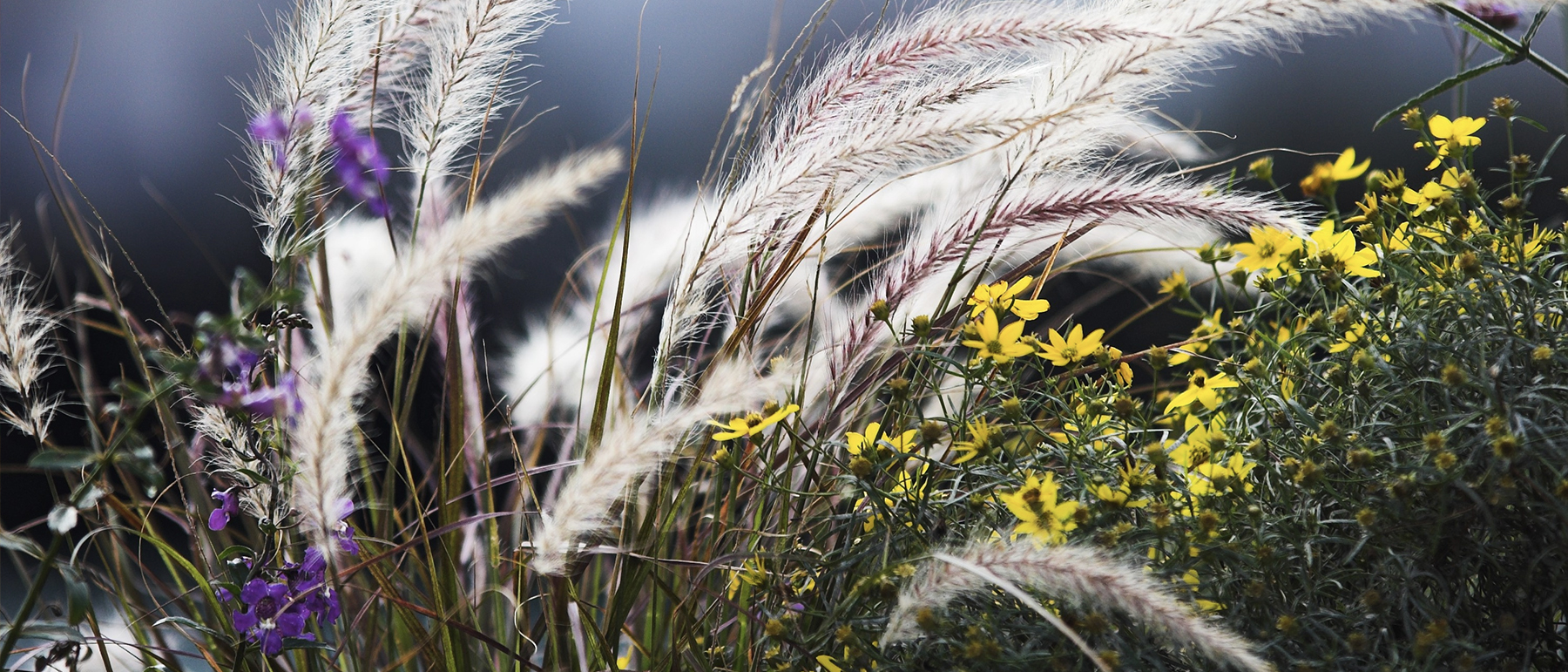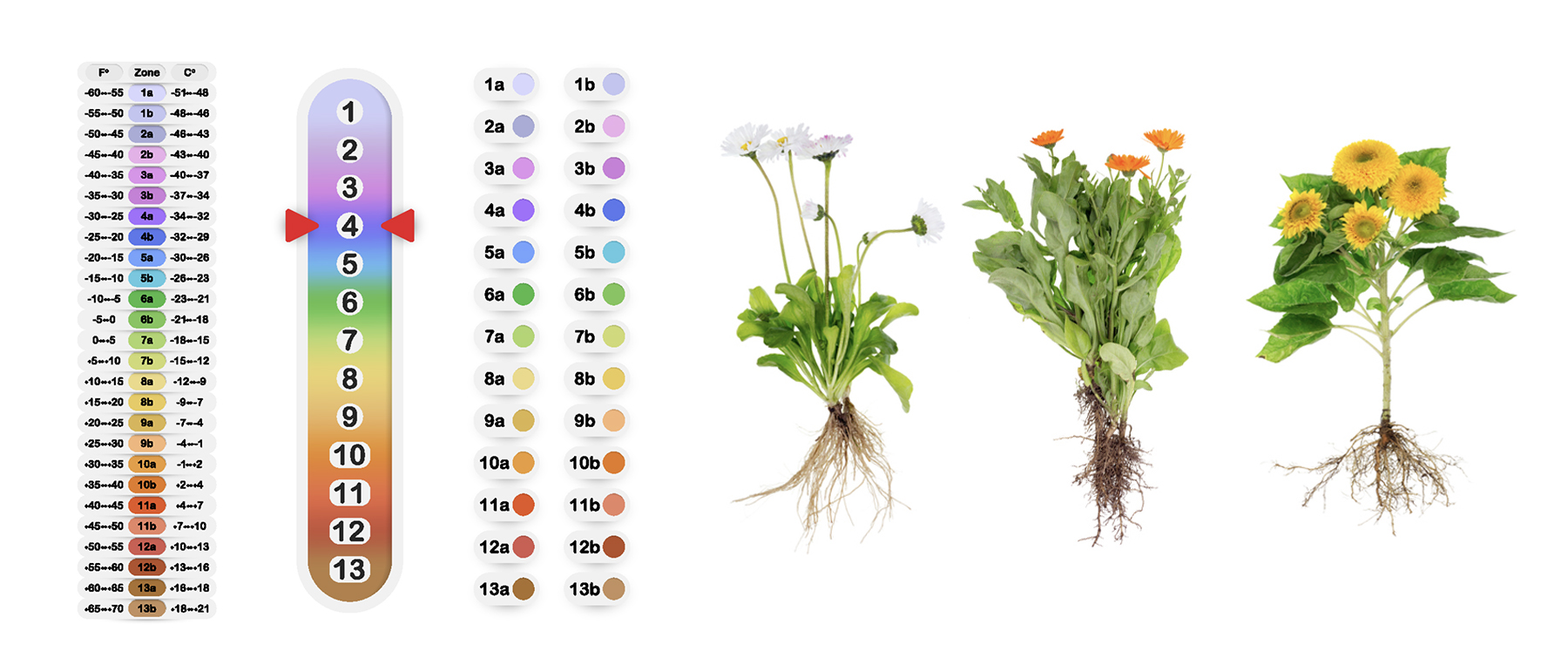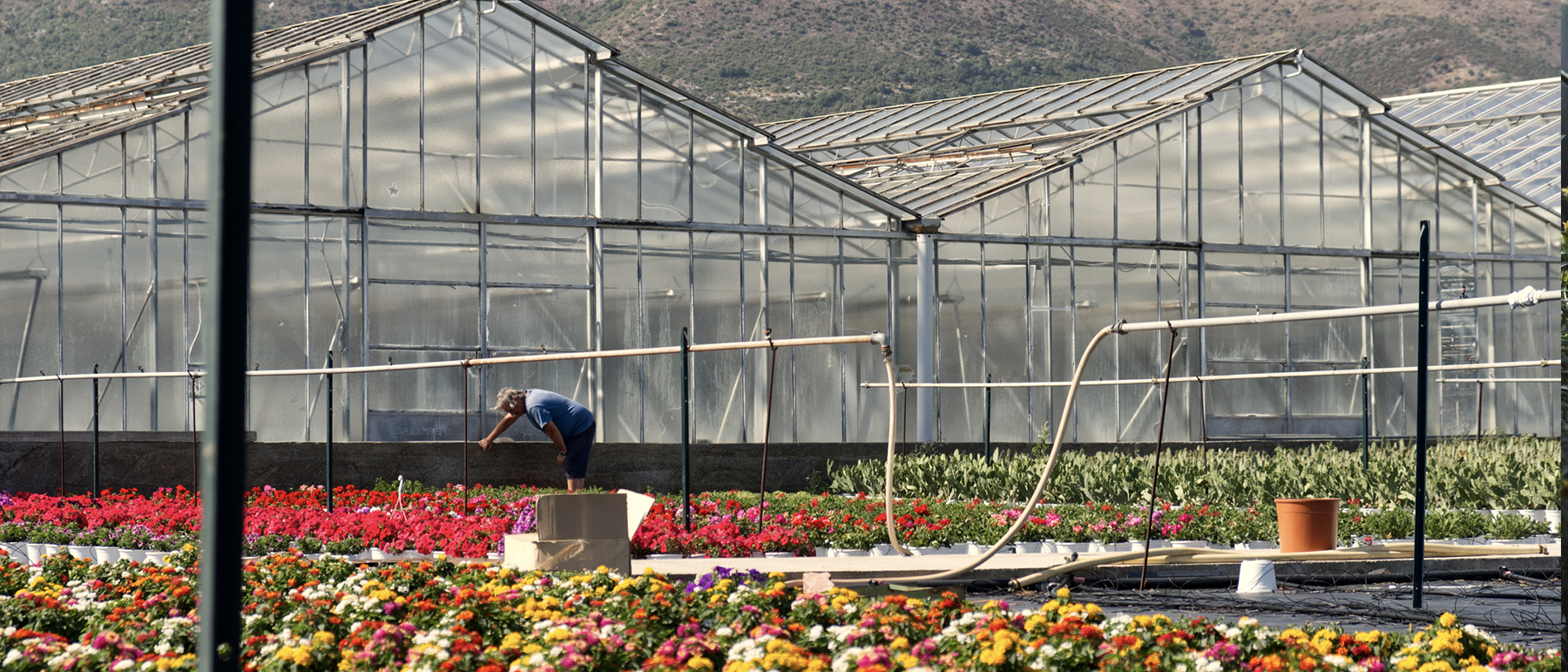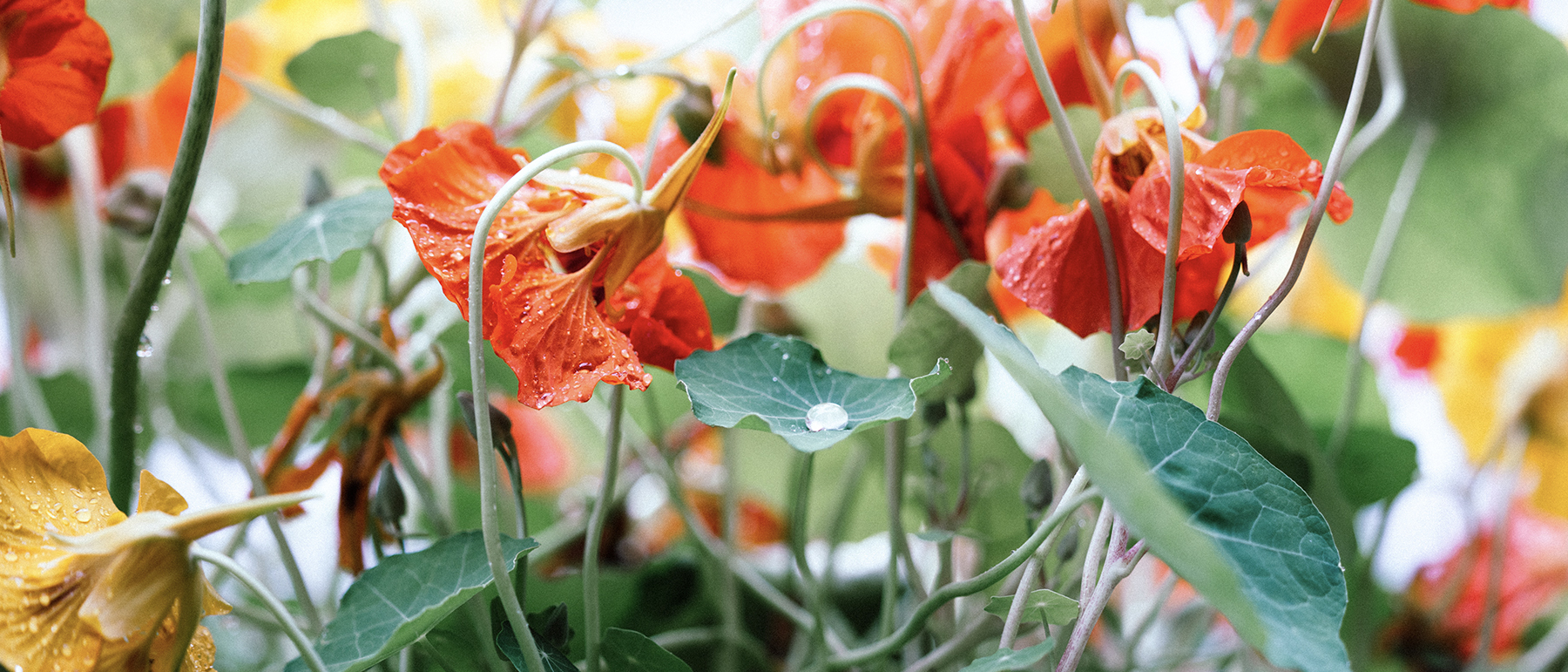Planning your planting schedule is essential to ensure your premises’ landscape and exterior space always looks their best. Different plants naturally bloom at different times of the year and your location and climate also significantly impact your seasonal planting. Spring is always a key time for preparing and planting to ensure the rest of the year is set up for success.
[ez-toc]Planting zones are the main driver of what to plant when in the US, with different zones significantly influencing what you can plant and when you can plant it. Let’s look more closely at our planting zones here in the US and how they may impact your choice of plants.
US Planting Hardiness Planting Zones

The United States Department of Agriculture (USDA) splits the country into hardiness planning zones. They are helpfully displayed on a map on their website and it helps to make it easy to understand the plants that will thrive in your region. The map is interactive and GIS-based, making it easy to find the right information for your location.
The USDA plant hardiness map takes into account:
- climate and weather conditions
- average daily temperatures
- average days of sunlight
- rainfall and snow and ice levels
- closeness to a large body of water
- elevation
- the urban heat effect
What is Plant Hardiness?
Plant hardiness is simply a plant’s ability to survive in adverse growing climates. These include drought, flooding, cold, and heat. It uses a complex scientific formula and relies upon plant genetics for determining a plant’s ability to withstand cold temperatures. Each plant cultivar may have different hardiness levels dependent on both genetics and adapting to its surroundings. Different parts of the same flower can even have different hardiness levels. For example, many perennials “die” in the colder months but their roots are hardy enough to ensure they grow back in the spring.
Many plants require very specific environments to thrive. You can make some adjustments to aid their growth such as soil type and moisture levels, but the temperature is very difficult to control. Choosing the right plants for your specific zone will ensure better growth and also create a better and more resilient space for visitors to your premises. Let’s look more closely at the zones around the US and the most suitable plants in each region.
A Note about Perennials and Annuals
Creating an impact on your business premises grounds has a lot to do with the plants you choose. Bright and colorful annual flowers immediately grab the eye while longer-lasting perennials also have their benefits. A mixture of both perennials and annuals is the most popular choice as they help to create the right atmosphere.
Certain places like entrances and road signage areas are perfect for vivid bursts of annual flowers. However, the planting beds around your property may not need to make such an impact so hardy and attractive perennial plants can often be the best choice here. It’s also worth remembering the cost saving when you invest in perennial plants.
Breaking Down Plant Hardiness Zones

USDA hardiness zones ensure every landscaper, farmer, and grower across the US can make the right decisions regarding their seasonal planting. Understanding plant hardiness zones will help ensure the right growth for your region and the best chance of success with your landscaping.
There are 13 zones in total and as a rule, if a plant performs well in one zone, it can usually survive in higher zones too. For example, a zone 3 plant should perform well in zone 7, provided all other plant requirements are in place. Here we’re breaking down the zones, in turn, to help provide a comprehensive resource for seasonal planting.
Planting Zone 1
Zone 1 is the coldest of all the zones in the United States. Minimum average temperatures sit between -60 and 50- degrees Fahrenheit. It is probably the most difficult zone for gardening and the majority of Zone 1 is in the state of Alaska. In a tundra environment, only the hardiest plants can survive and thrive. They also need to have high drought tolerance.
What plants can be grown in Zone 1?
Zone 1 is more challenging than others across the United States but some rare plants can survive and thrive. Native plants are already adapted to the climate so are the best choice and annuals that don’t need to survive the winter are also popular.
Some attractive and eye-catching flowers can thrive in Zone 1 but the plants need to have high levels of drought tolerance and cold hardiness. Popular growing choices include oxeye daisy, yarrow, goldenrod, sunflower, delphinium, and arrowhead.
Planting Zone 2
Zone 2 includes parts of Alaska and also the continental States. Average minimum temperatures here fall between -50- and -40-degrees Fahrenheit. Such temperatures do present growing problems with high winds and drought conditions prevalent across the zone.
What plants can be grown in Zone 2?
Plants in Zone 2 need to be able to withstand extreme cold and high levels of drought. Native plants are the best place to start.
For attractive flowering plants in Zone 2, natives again are your best choice. However, experienced gardeners may have success with some types of flowers including Monkshood, primrose, poppy, and sea holly.
Planting Zone 3
Plant hardiness zone 3 covers parts of Alaska like 1 and 2, but also northern areas of the continental States, areas of high altitude in particular. Average minimum temperatures are from -40- to -30 degrees Fahrenheit. The main threats to growing conditions include extreme cold, high winds, and low moisture levels.
What plants can be grown in Zone 3?
Short growing seasons mean you are limited in the flowers, trees, and plants you can grow. Starting plants indoors or in a greenhouse can extend this. A larger number of flowers can be enjoyed here, including wallflower, snow-in-summer, aster, salvia, and Virginia bluebells.
Planting Zone 4
This planting zone covers southern coastal areas of Alaska as well as high elevations in the western mountains and northern areas of the States. These regions share a minimum average temperature of -30 to -20 degrees Fahrenheit. You’ll face fewer challenges planting here than in colder areas but still need to consider the shorter growing season and invest in additional preservatives such as mulch to protect your plants in colder months.
What plants can be grown in Zone 4?
With the right approach, planting in Zone 4 can be plentiful. It has a wider range of perennial native flowers, and you can consider other blooms such as coneflower, iris, phlox, and daylily.
Planting Zone 5
Planting zone 5 still includes some southerly parts of Alaska but also the Northern Central United States and some parts of New England. Temperatures here have a minimum average of -20- to -10 degrees Fahrenheit.
Gardens in this region are diverse and varied. From the wide plains of the Midwest to woodlands and coastal regions, plants need to have a hardier edge but suit the longer growing season.
What plants can be grown in Zone 5?
Planters and raised beds keep the soils in Zone 5 warm enough for a wider range of plants. It can also be cost-effective to use a mulch to keep the soil warm. With close care and attention flower gardens and yards can bloom with new flowers to consider including Black-eyed Susans, Cinquefoil, and Baptisia.
Planting Zone 6 & 7
The USDA plant hardiness zone 6 is one of the largest. It covers a huge portion of the States known for its generally mild climate and average minimum winter temperatures of -10 to 0 degrees Fahrenheit. There is a wide range of growth possibilities in this zone, with very few barriers to creating the landscape you’re looking for. In Zone 7 you’ve got a wide range of different climates and diverse landscapes from the Oklahoma prairies to the East coast, as well as the forests of Oregon.
What plants can be grown in Zone 6?
Practically anything! Let your imagination run wild. Zone 6 is home to hundreds if not thousands of nurseries, garden centers, and places dedicated to all things landscaping. For welcoming floral landscapes, for visitors and your staff alike, you can take advantage of the longer growing season and add in flowers year round such as Japanese bottlebrush and Floribunda roses.
What plants can be grown in Zone 7?
Early spring cold can impact your plants if you start your seasonal planting too early. The hot summers in zone 7 create the perfect environment for the bright blooms of most flowering annuals.
Planting Zone 8
Zone 8 is one of the warmest plant hardiness zones. It covers a large area across the southern United States and moves up the west coast. Minimum winter temperatures average out at 10 to 20 degrees Fahrenheit. Growing in this region enjoys a long and sustainable planting season.
What plants can be grown in Zone 8?
The heat of zone 8 is perfect for bright flower planters and lawn growth. They can be beautified with the addition of Asiatic lilies, hardy geraniums, and Mexican petunias too.
Planting Zone 9
Planting Zone 9 is the only “year-round” planting zone across the States. It covers areas including California, Florida, Texas, Arizona, and the coast around the Gulf of Mexico. Minimum winter temperatures are around 20 to 30 degrees Fahrenheit. Your premises can benefit from a colorful and attractive landscape every month of the year.
What plants can be grown in Zone 9?
This is the first US region where tropical plants can be introduced. Tropical perennial flowers and plants can form the centerpiece of your zone 9 landscapes.
Planting Zone 10
Planting zone 10 covers southern Florida, Hawaii, and the southern inland area of California. This small zone has a very balmy temperature with winters only falling to a minimum of 30 to 40 degrees Fahrenheit. Lack of freezing temperatures means endless options for winter landscaping, but the heat of the summer can mean some limitations on planting in hotter months.
What plants can be grown in Zone 10?
Summer plants need to be able to handle the humid heat of the hottest summers. Cannas, croton, dahlias, geraniums, gladioli, jasmine, sedum, snake plants, and succulents are amongst the most popular and attractive blooms to consider for Zone 10 landscapes.
Planting Zone 11
Another smaller area, planting zone 11 covers parts of Hawaii, Puerto Rico, the Florida Keys, and some further small regions across the US. Extremely warm summers are balanced with mellow winters and average winter temperatures of between 40- and 50-degrees Fahrenheit. Cold hardiness is not a problem in this region, but extreme heat can be.
What plants can be grown in Zone 11?
Tropical plants are perfect for the temperatures in zone 11. It’s important to look out for plants with high levels of heat tolerance. Begonias, kangaroo paw, and striking drumstick allium are some of the flowers to consider as they have great heat tolerance levels too.
Ornamental Planting by Hardiness Zone

Commercial landscaping focuses on providing your clients and employees with an enjoyable external space to enjoy. Planting is more focused on style and character than fruitfulness and harvest. A combination of perennial and annual blooms and ornamental trees work fantastically together to ensure there is always a splash of color or something elegant for visitors to your premises to enjoy, whatever the temperature may be.
Flowering ornamental trees and bushes as well as colorful native grasses can also brighten up every property. Plants like these require special care year-round: adequate watering, strategic pruning, and proper nutrition greatly extend their lifespan.
Plant Seasonally, in line with your Hardiness Zone
Understanding how the climate in your region impacts different plants can guide your seasonal planting effectively. Whether you maintain public or private gardens or simply want your business’ outdoor space to be attractive and inviting, seasonal planting and planting linked to your climate matter. Check out your zone and keep the guidance in mind before beginning your next seasonal planting schedule.
Contact U.S. Lawns today to learn more about planting zone for landscaping success.

